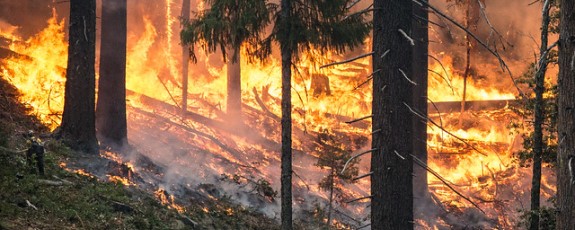Fire is a natural component of terrestrial ecosystems in the Northeast with many forest ecosystems adapted to fire. However, intense or sustained fires can have large impacts on forest regeneration and community composition. Although the Northeast is a relatively temperate region with few large fires, changing climate may bring hotter and drier weather that could result in increased fire frequency, extent and severity. Based on data from the Fire Program Analysis (FPA) fire-occurrence database and NWCG data, we extracted the location and size for all fires across the northeast region.
Data Source and Reliability
The wildfire data comes primarily from the USDA Forest Service Fire Program Analysis Fire-Occurrence Database (FPA FOD, RDS-2013-0009.6). This dataset is widely used in research, is maintained by a federal agency, and compiles records from state, federal, and local sources, making it a reliable source available for New England and New York. As of 08/28/2025, supplemental records from the NWCG Fire-Data system are integrated to fill gaps, but only a limited set of standardized fields (date, size, name, latitude, longitude, state) are used.
Processing Steps
- Filter to region: Incidents are restricted to the seven New England states plus New York.
- Standardize: Dates, coordinates, and state names are normalized; longitude signs are corrected.
- De-duplicate: Potential duplicates (within 7 days and 2 miles) are merged to avoid double counting.
- Clean: Rows with missing or invalid coordinates are removed.
- Fit: Trend lines were fitted to the data based on a 3 year moving average to avoid effects of outliers.
- Export: The cleaned dataset is saved to a structured Excel file, which feeds later analyses and dashboards.
- Derive layers: Additional products (fire frequency, extent, severity; site grids and points) are calculated only from this cleaned dataset.
Key Limitation
Reporting practices have improved significantly over time. This means that increases in the number of reported fires may partly reflect better reporting and coverage, not only actual increases in fire activity. Size-based measures (acres burned, maximum fire size) are generally less sensitive to this bias than raw counts.
For more information on data source Fire Program Analysis (FPA), visit: Fire Program Analysis (FPA)
For NWCG Fire-Data system, visit: NWCG Fire-Data System
Have a question or want to share feedback? Contact Us!
Have a resource to contribute? Suggest a monitoring effort or protocol here.
